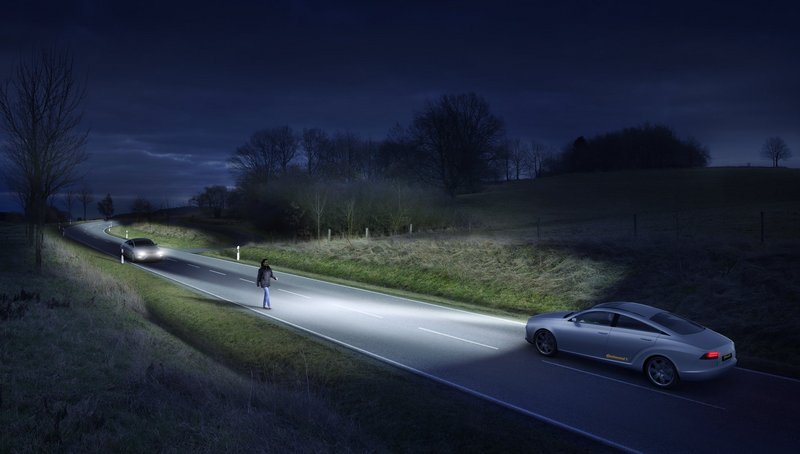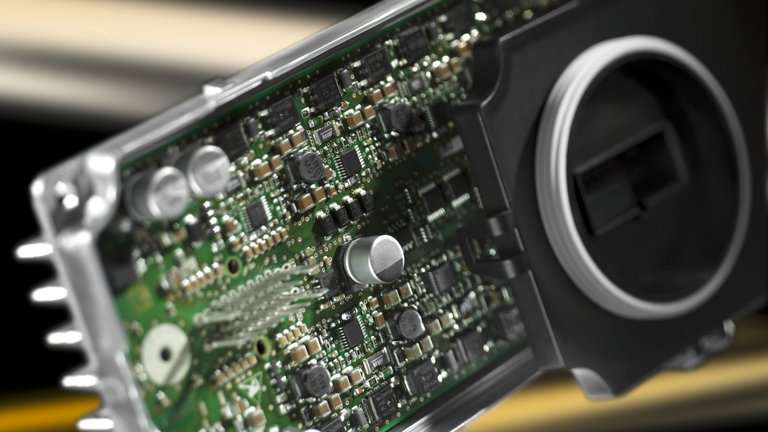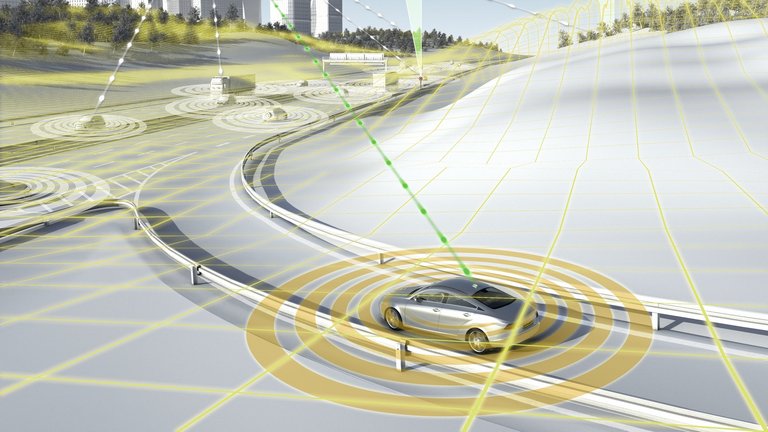Continental Focuses on LED Innovations
- Continental develops and supplies control electronics for LED headlights in all vehicle classes
- Networked electronic systems make possible numerous new functions
- Technology enhances vehicle safety and reduces energy consumption
Vienna, Austria, March 14, 2014. Headlights featuring LEDs (light-emitting diodes) as the sole luminous source are currently taking our roads by storm. Used so far in the exterior lighting primarily for daytime running lights, tail lights, indicators and the like, LEDs now provide sufficient luminosity to function as low-beam or high-beam lights as well in irradiating the vehicle surroundings. They require, however complex control electronics to individually regulate each of the many LEDs in the headlight as required. Dr. Maximilian Austerer, group leader for systems development of light control units at Continental in Austria notes: "Our light control units are perfectly tailored to this task and have already stood the test in terms of performance in a number of series projects."
The LED: a host of functional advantages with high efficiency
LEDs offer numerous advantages over halogen or xenon lights. They not only give designers the freedom to come up with distinctive headlight creations. They are also more efficient and offer a higher degree of safety. The light emitted by the LED is more like sunlight than that of other light sources and is thus more pleasant for road users. In combination with assistance systems, LED headlights additionally enable other road users or objects to be specifically picked out and illuminated. LEDs can at the same time respond more quickly in dimming the light directed at certain areas – to avoid blinding oncoming traffic, for example.
To top it all off, LEDs are more efficient and have a service life of up to 10,000 hours. This is significantly longer than the roughly 1,000 hours that conventional lights provide. Their energy consumption is considerably lower. A simple LED low-beam headlight requires only 18 watts as against 35 for the xenon counterpart. LEDs, moreover, stand up better to vibrations and do not require maintenance.
The Control Unit is behind it all
"LED lights require a specific electronic control unit. This means that LEDs cannot be operated with the usual 12-volt on-board voltage as conventional light bulbs can," explains Austerer. "Certain arrangements of LED strands – that is, a bundle of several individual LEDs – require a voltage of up to 75 volts." Continental's LED light control units therefore have an input circuit that generates a suitable operating voltage. The electronics also control light intensity by means of pulse-width modulation.
Perfect light management
With the use of LEDs in adaptive front headlights, a host of new coordination tasks are in store for the control electronics. As a result, Continental has further developed its LED light control units, enabling them to control all light functions centrally. A prime example is the type of full-LED headlights developed by a German premium manufacturer. They perform all light functions using LEDs. The LED strands in such headlights can be individually controlled to appropriately light up the road for the particular situation. A special light for freeways or country roads, low-beam and high-beam light, and brightly lit corners or intersections are all provided by Continental's light control unit within fractions of a second.
The LED control units can do even more than that, though. Thanks to their flexibility, they are likewise suitable for controlling headlights that feature a combination of conventional light bulbs and LEDs. A number of series production headlights already use LEDs for daytime running lights and indicators, for example, whereas halogen or xenon technology is still used for dims or brights. If the vehicle features high-beam assist, the light control unit also performs the change from dims to brights by means of a masking mechanism. A similar mechanism is applied to control light when cornering and for active curve illumination.
High performance and high standards
Continental's lighting electronics feature a high-performance 32-bit chip for these diverse tasks. For the LED drivers, Continental pursues a platform strategy comprising ASIC and ASSP solutions that are under advanced development in close collaboration with semiconductor manufacturers. Due to their integration in assistance systems and the AUTOSAR operating system, LED light control units also require higher functional safety standards and are certified in accordance with ISO 26262 for safety class ASIL B.
In addition, the control units feature elaborate all-round sealing and satisfy the requirements of protection class IP 69. This is a necessity in meeting the challenges of extremely tough ambient conditions, with temperatures as high as 105°C, and the occasional shower from steam-jet air ejectors, for example. The light control unit is installed in the engine compartment and not directly in the headlight itself. This spatial separation cuts costs in the event that the headlight or control unit becomes damaged and must be replaced.
Series production experience and development expertise
"Since the series debut in 2011, a growing number of premium customers in the passenger car and truck segment have been placing their trust in our innovative light control units," Austerer recaps. "We use these units to control diverse functions in lights featuring conventional light bulbs and LEDs as well as in full-LED headlights that get by without any light bulbs at all. At the same time, our customers also benefit from Continental's wide-ranging electronics activities. Together, our engineers master the integration of the light control unit into the vehicle's electronics architecture extremely well." What is meant here is that the light control unit communicates with the central vehicle electronics via LIN and CAN, for instance, and uses information on speed, steering angle, the driver's lighting requirements, and the measurement data of the light and rain sensor to control the light sources.
The electronics generally have a modular design and can easily be adapted for different applications in various vehicle classes. The following figures illustrate the versatility of this approach: using the same hardware, currents from 70 milliampere to 1.5 ampere and voltages from 2 to 75 volts can be varied at the control unit output.
The amount of vehicle platforms with LEDs used in front headlights in particular is rising. Even some compact passenger cars now already feature initial LED light functions. In this vehicle segment, SMD (surface mounted device) technology is on the way to making cost-effective, automated mass production of LED boards a possibility.
Future offers a broad range of new functions for LED lights
Another development option involves the further refinement of controls for individual LED bundles. To cite just one instance: In the near future people at the edge of the road will be lit up. Or navigation instructions will be converted into light pulses to visually guide the driver. In addition, future vehicle generations will use data from the navigation system to illuminate the route ahead more effectively (eHorizon technology). As matrix headlights become more and more refined, the existing mechanical elements in headlights will be eliminated. To be sure, controlling these headlights is even more complex and they require sophisticated thermal management. Continental also wants to make progress in terms of the size of LED electronics. The aim over the next few years is to considerably reduce their size while simultaneously equipping them with more functions. In this regard, a further target is to reduce the complexity of the hardware. Using new topology concepts, Continental will master this challenge as well and once again demonstrate its pioneering role in LED light control.


